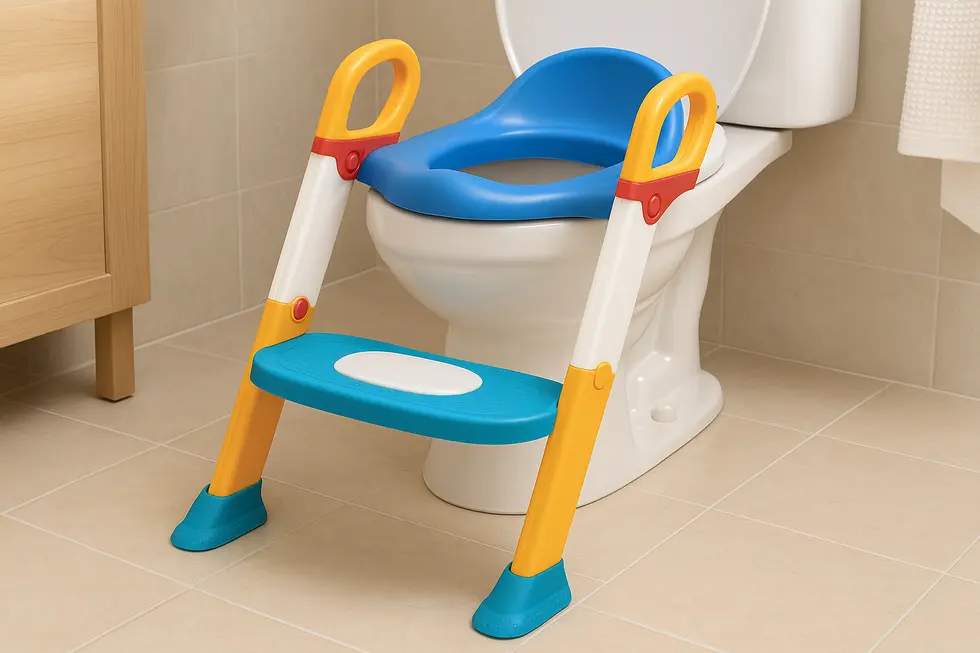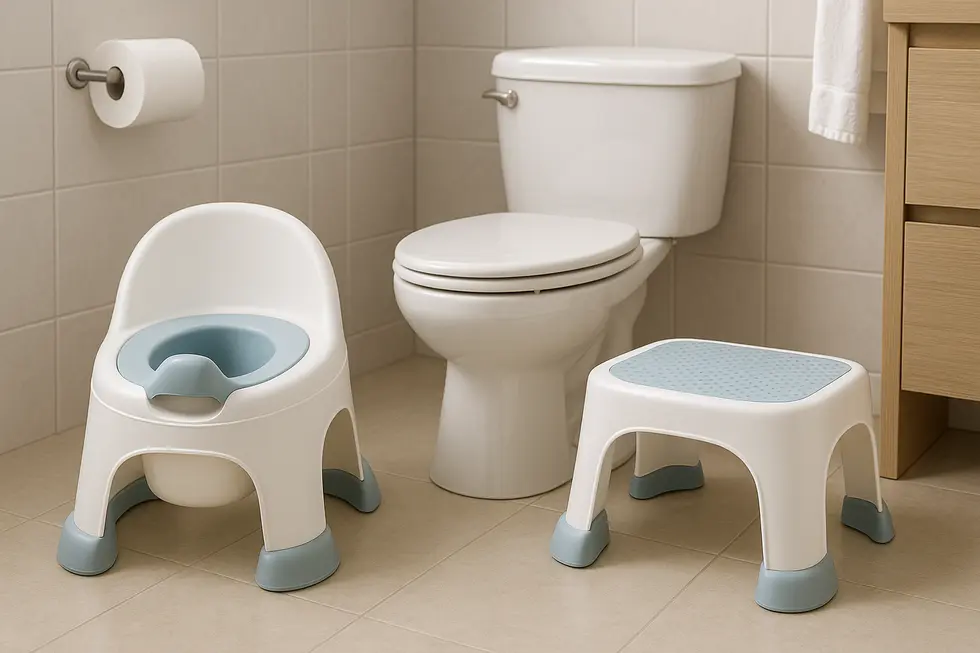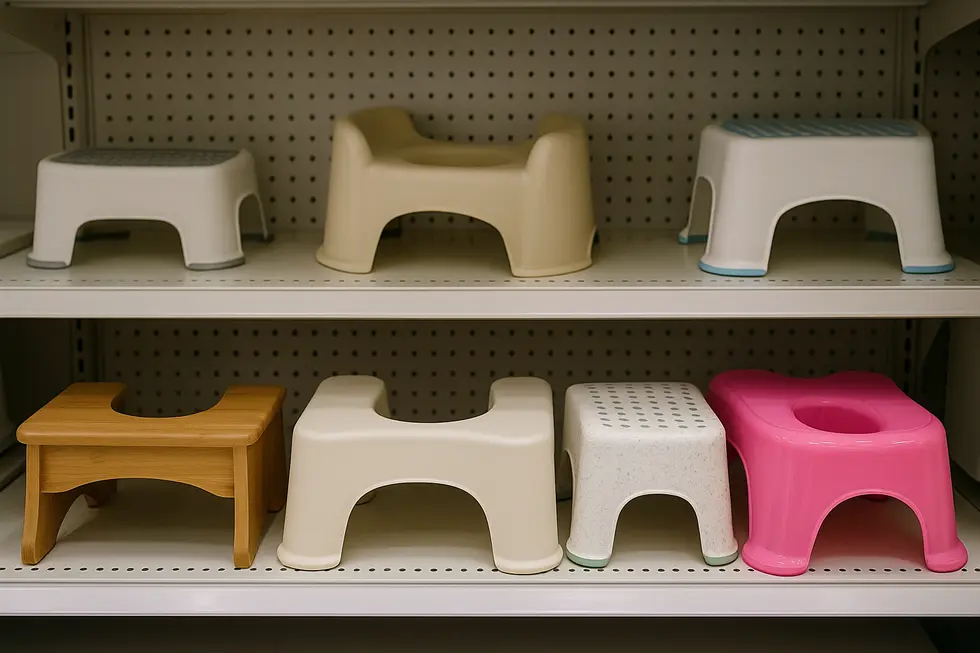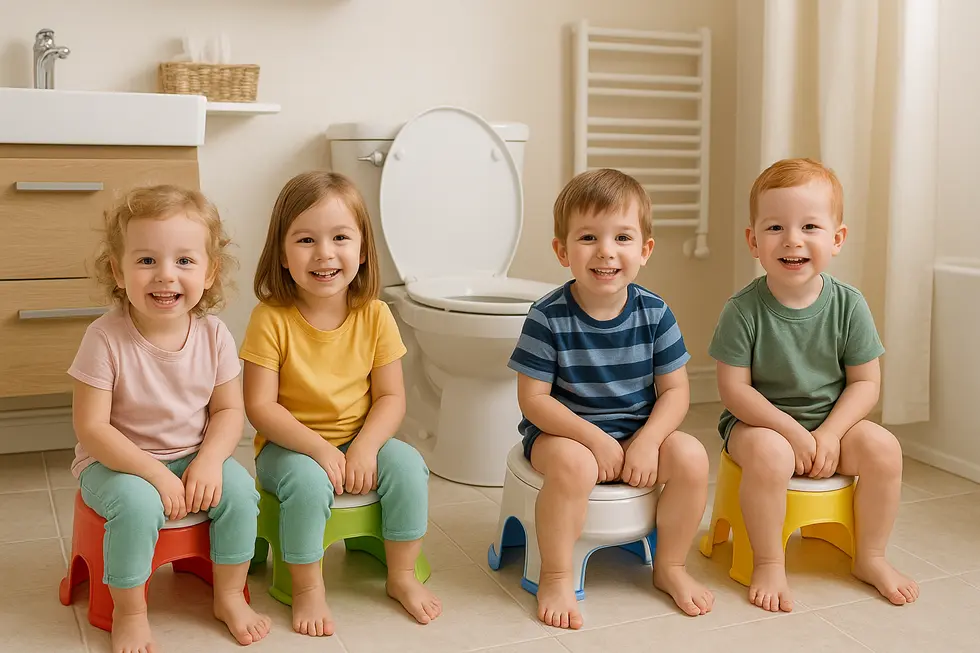Toilet Stools
Mastering Potty Training: The Essential Guide to Kids Toilet Stools
Potty training is a significant milestone in a child’s development, and having the right tools is essential to making this transition as smooth as possible. A kids toilet stool is one of the most helpful tools in this phase, offering safety, comfort, and flexibility as toddlers learn to use the toilet independently. Kids toilet stools play a crucial role by providing proper height support and encouraging confidence in young children. This guide explores key features of a kids toilet stool, including safety and design aspects, multifunctionality for different potty training stages, and the diverse market options available. Whether you are beginning the potty training journey or seeking an upgrade, understanding these factors can greatly assist in choosing the best kids toilet stool for your family.
Built for Little Feet: Safety-First Design Principles of a Kids Toilet Stool

Safety starts at the base. A quality kids toilet stool is only as reliable as its footing, so manufacturers begin with wide footprints lined in rubber or EVA anti-skid pads. These grippy textures anchor the stool to tile or laminate and keep restless toes from sliding on the step itself. Parents quickly notice that the same non-slip logic extends upward: many combination ladder seats use treads patterned like sneaker soles to give toddlers a confident climb.
Growing room without the wobble. Because children sprout almost overnight, adjustable height ladders have become a hallmark of modern designs. A simple twist-lock or snap system lets you raise the step in half-inch increments, preserving proper knee angle and stability as kids graduate from diapers to underwear. Unlike makeshift phone books or overturned bins, these purpose-built platforms distribute weight evenly, preventing the teetering that causes tumbles.
Comfort encourages success. Early potty sessions can last longer than anyone expects, so seating surfaces are now cushioned with skin-friendly PU. The padding takes pressure off little thighs while also insulating against a chilly porcelain rim. Thoughtful extras—soft-close lids and magnetic seat rings that stay upright until a child nudges them down—protect tiny fingers from pinches and remove the intimidation factor of a heavy seat.
Support where it matters. For youngsters who still need something to grip, parents often choose toilet stools with handles that flank the ladder like miniature banisters. The handles encourage proper hand placement, guiding children into an upright, balanced posture and drastically reducing the chance of a backward slip.
Clean, safe materials. Daily contact with bare skin means plastics must be BPA- and PVC-free, while smooth, sealed surfaces rinse clean under the showerhead. Foldable frames use corrosion-resistant hinges so the stool collapses flat for travel without loosening over time.
Each of these design choices works toward a single goal: empowering toddlers to use the bathroom independently while giving parents peace of mind that every climb, sit, and step down is as safe as it is simple.
From First Flush to Hand-Wash Triumph: The Shape-Shifting Power of a Kids Toilet Stool

Every parent knows toddlers learn fastest when their tools grow with them. A well-designed kids toilet stool follows that curve, shape-shifting through three roles that mirror potty training milestones. It begins as a freestanding potty chair: a low, welcoming seat with splash guard and slide-out pot that rinses clean in seconds. Planted feet keep sessions stable and cut down on “mid-pee” spills.
When confidence blooms, the upper ring snaps onto the family toilet, shrinking the wide opening and keeping little legs at a healthy hip angle. Gradual elevation matters; proper foot support maintains pelvic alignment and helps ward off constipation. Homes with elongated bowls should double-check fit, but round toilets are usually covered.
After the leap to the big toilet, the remaining base refuses to retire. Flip it over and it becomes a textured step stool that offers just enough boost for handwashing independence or self-mounting the toilet. Choosing a seven- to eight-inch height keeps knees above hips yet lets the stool slide beneath the vanity. For a quick sizing reference, see our guide to the perfect toilet stool height.
This multipurpose journey also stretches every dollar. Instead of buying separate potty, trainer seat, and sink step, one purchase carries a child from diapers to diligent hand-washer, then passes to younger siblings. Many models even encourage a gentle squat, echoing the natural posture specialists recommend for comfortable bowel movements.
Safety features weave through each phase: non-skid rubber, rounded edges, side handles, and wipe-clean materials that resist lingering odors. Because children can move the stool themselves, they rehearse independence every time they tote it from toilet to sink.
By blending adaptability, ergonomic support, and hygiene cues, the multi-functional kids toilet stool becomes more than a bathroom accessory—it’s a silent coach that gradually withdraws assistance as skills blossom. (For additional parent reviews, see The Bump’s roundup of the best potty training toilets.)
From Budget Plastics to Smart Fibers: How Price and Material Shape the Ideal Kids Toilet Stool

Parents often begin shopping for a kids toilet stool with a simple goal: raise their toddler to sink or seat height without wobble or drama. Yet a quick glance at the price tags—stretching from pocket-money basics around £5 to tech-laden models topping £55—reveals how sharply material choices and added engineering steer cost.
Most entry-level stools rely on single-mould polypropylene. The resin is light, inexpensive, and surprisingly tough, but it flexes under heavier loads. To counter that, manufacturers cast wide bases and pour extra plastic into the frame, keeping prices low while meeting safety standards. These units typically feature a moulded, dimpled tread or glued-on rubber pads for grip; they do one job well and nothing more.
Step into the £20–£40 bracket and plastics get smarter. Makers blend polymers with bamboo or carbon fibres, trimming weight while boosting rigidity. This opens the door to multifunction designs: snap-off potty bowls that transform into a stool, or flip-over lids that double as ergonomic trainer seats. Because parents effectively buy two or three tools in one, the perceived value justifies the jump in price.
Adjustability is the next premium lever. Telescoping legs and modular risers let one stool serve siblings of different ages or adapt to varying sink heights, reducing clutter in small bathrooms. Adding such mechanics means extra moulds, metal fasteners, and stricter testing, nudging costs into the £50 range. Still, families keen on long-term use often find the trade-off worthwhile, and the resale market for these upscale models is robust.
At the very top, a niche group of “smart” stools sprinkles in motion-activated night lights or discreet load sensors that log time spent squatting—features rooted in adult wellness products. While fun, they illustrate the law of diminishing returns: parents pay chiefly for novelty, not core function.
Whether choosing a no-frills plastic perch or a fully adjustable platform, understanding how material science informs durability, weight, and stability helps families invest wisely. For a deeper dive into economic factors driving height customization, see this guide on innovation in adjustable toilet stools.
Final thoughts
Understanding the key features, multifunctionality, and market options of kids toilet stools can greatly enhance the potty training experience for both parents and toddlers. By focusing on safety and design, and considering the diverse range of products and prices, families can make informed choices that support their child’s journey towards independence in the bathroom.
Experience a new standard of clean with PEGABidet—designed for comfort, safety, and independence. Join thousands who trust us to make personal care simple and dignified. Contact us at contact@pegabidet.com
About us
PEGABidet is a brand owned by L.A NEXTGEN LLC, based in California. We design intuitive, hygienic, and accessible bathroom solutions that prioritize safety, dignity, and independence. Our mission is to make personal care effortless and empowering for people at every stage of life.

